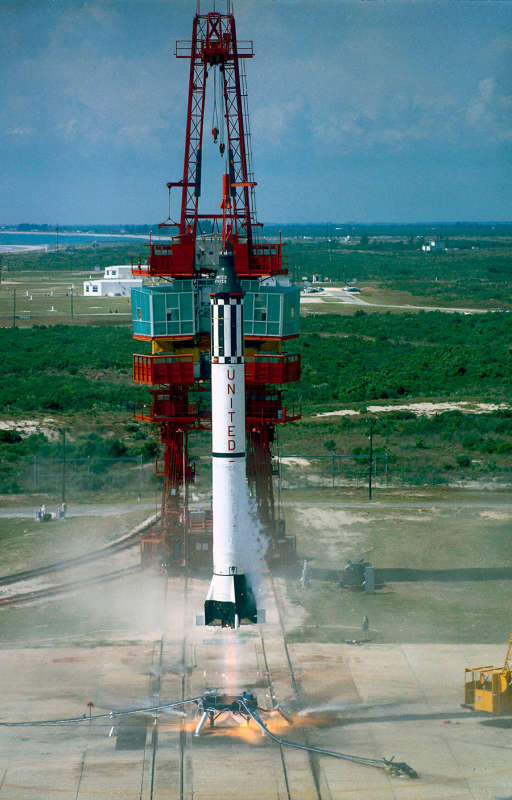
|
Credit & Copyright: NASA
Explanation:
Sixty years ago, near the
dawn of the space
age,
NASA controllers "lit the candle" and sent
Mercury
astronaut Alan Shepard
arcing into space atop a Redstone rocket.
His cramped
space capsule was dubbed Freedom 7.
Broadcast live to a global television audience, the historic
Mercury-Redstone 3
(MR-3) spacecraft was launched from
Cape Canaveral Florida at 9:34 a.m. Eastern Time on May 5, 1961.
The flight of Freedom
7,
the first space flight by an American, followed less
than a month after the first human venture into space
by Soviet Cosmonaut Yuri Gagarin.
The 15 minute sub-orbital flight achieved an altitude of 116 miles
and a maximum speed of 5,134 miles per hour.
As Shepard looked back
near the peak of Freedom 7's
trajectory, he could see the outlines of
the west coast of Florida, Lake Okeechobe in central Florida,
the Gulf of Mexico, and the Bahamas.
Shepard would later
view planet Earth from a more distant perspective
and walk on the Moon as commander of the
Apollo 14 mission.
|
January February March April May June July August September October November December |
| |||||||||||||||||||||||||||||||||||||||||||||||||||||||
NASA Web Site Statements, Warnings, and Disclaimers
NASA Official: Jay Norris. Specific rights apply.
A service of: LHEA at NASA / GSFC
& Michigan Tech. U.
Based on Astronomy Picture
Of the Day
Publications with keywords: Alan B. Shepard - Mercury program
Publications with words: Alan B. Shepard - Mercury program
See also:
